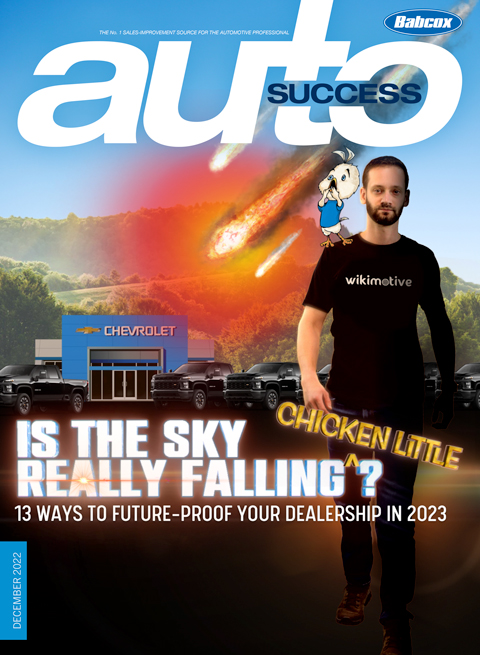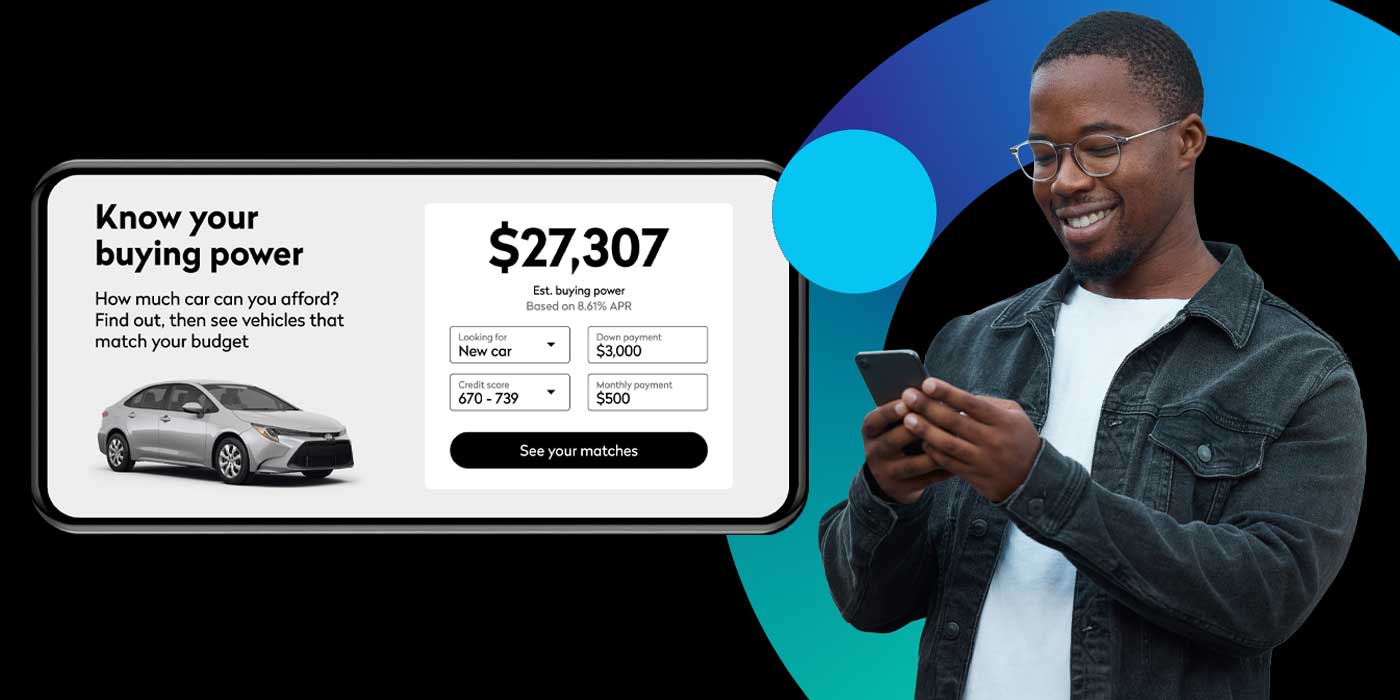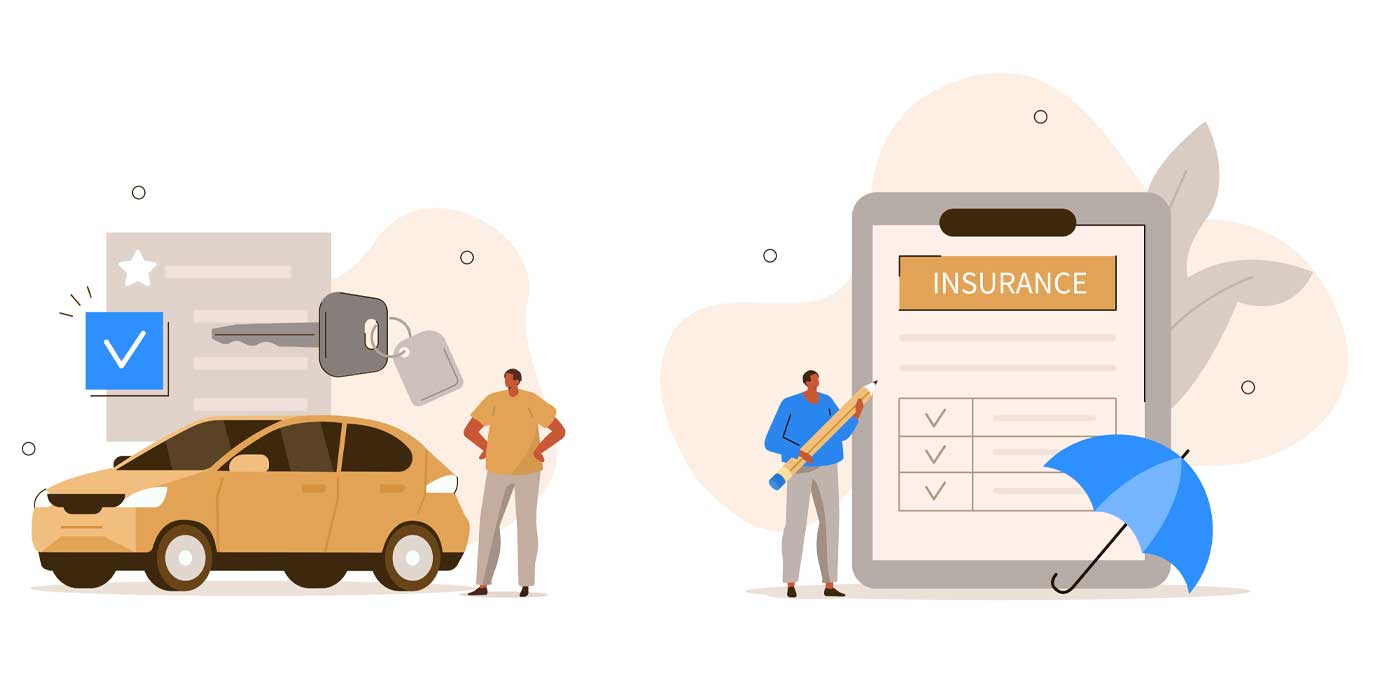13 Ways to Futureproof Your Dealership in 2023
A catastrophic series of events is upon us, the likes of which the automotive industry has never seen. Changing consumer priorities are compounding with inflation, rate hikes, supply chain disruptions and more and all the while, the OEMs are hitting us while we’re down to erode the franchise model, or at least our independence and ability to make an honest profit… Or so everyone keeps saying…
Is the end of auto retail really upon us? Is it too late to change our circumstances? In a word, hell no (OK, two words). Sure, the above circumstances are forcing more change in less time than we’re used to in years past. Those who cry Armageddon, however, are either unwilling to do what it takes to change or perpetuating the bad news is improving their own bottom line. No, the industry is not collapsing, but proactivity and adaptability are increasingly necessary traits of the successful dealer.
Let’s explore detailed answers to the big question on your mind: How has that dealer in your 20 Group, or that dealer across town, done so much better than everyone else in 2022 and how can you get there in 2023?

Figures May Not Lie, but Liars Figure
Let’s be clear. There really are supply chain issues. No, you didn’t imagine those rate hikes. Yes, OEM overreach is increasingly prevalent for many brands. The purchase demand for cars really did decline through the second half of 2022 and you need to maintain profitability with less demand. Before we can look at the fake news and how to improve, we need to be realistic and orient ourselves. At Wikimotive, we often surprise our dealer partners when we share objective Google-sourced data on local search volumes for sales and service searches. It’s an excellent, factual and free barometer to gauge what the market is doing and it can be eye-opening when the market at large makes a big move. It’s also a great tool for holding your vendors accountable, but we’ll come back to that.
#1 Measure objective facts about your circumstances without falling victim to excuse-making.
The trouble with the realities of the late 2022/early 2023 market is that they can be generalized into excuses that your vendors and staff can hide behind. Sometimes that excuse is actually a valid reason, but all too often, there’s more you could be doing to compete, and no one is presenting you with a valid way to orient, plan and adapt to what’s happening. What you need to know is this: The market is down, but there is a lot you can do to get a larger share of it without an infinite budget. Include market factors when you’re working to gauge your success, but don’t let anyone fool you into settling for mediocrity in the showroom or online.
“Schrodinger’s Website”
#2 Websites and their features break. Use it for just two minutes per day through the lens of a consumer.
In an increasingly digital world, your website needs to be functional, fast, easy to navigate and more. Often, it feels like when you look at it, everything seems in good order, but the minute you take your eyes off, the main navigation is broken, the phone number is wrong and the chatbot is speaking Chinese. It’s not just your website but a host of digital assets and properties that seem to do this. The first problem is that your job is to run the store and you can’t know all 471 things that can break online. The second problem is that vendors are typically lazy and will deflect blame or say “not my job” at the first opportunity. Let’s break down some of the most common problems, so you know how to inspect what you expect.
So Many Decisions
#3 Check your website navigation for real consumer intentions.
There are too many pages that should — and shouldn’t — be on your site to list them all here, so start with the basics. Go to your website and navigate around. Don’t do this arbitrarily, as that’s how you overlook the gremlins. Think like a consumer and use your website with a purpose.
Consider the following intentions:
“I want to pick a car and get a trade estimate.”
“I want to shop for a car within a $500/mo. budget.”
“I want to schedule an oil change and tire rotation.”
“I need a hood prop rod for a 2016 Ford Fiesta.”
If you have time to brush your teeth in the morning, you have time to navigate your website with just one intention each day. Alternate between trying this on a desktop and trying it on mobile, but when in doubt, use mobile. When you’ve tested everything without a single dead end, pat yourself on the back and start over because the moment you stop, your chatbot will turn out to be a double agent and stab you in the back.
Magic Lead-Delivery Buttons
Forms, trade tool, chat, service scheduler, digital retailing tool, OEM’s digital retailing tool, CapOne tool, your other trade tool… “Wait a second, why do we have two trade tools?! Are we paying for this?” Sound familiar?
#4 Check your website conversion methods carefully and frequently.
Seriously, there are more than a dozen ways to turn a website visit into a lead in your CRM. Have you tested them all without making any assumptions? When did you last click the phone icon on your mobile site? Did you stay on the line and test your phone tree? So much of this sounds obvious and most of it is supposed to be someone’s job, but even with our long-term dealer partners, we often find new issues. It feels like whack-a-mole sometimes, but you need to be testing your conversion methods. Good vendors should be proactively helping you with this, but if you don’t know what they should be checking, you can’t hold them accountable and you’re sure to leave money on the table.
The Google Listing — Listings?
We talk to a lot of dealers about this because we do free SEO/SEM audits, and this is an integral part. What I hear from most dealers is frustration with their Google Business Profile (aka Google My Business, GMB, GBP, Google Local, Google Maps) listings. Some dealers have one. Some have multiple, split by department, which is the current best practice. The most important thing is that they’re up to date and filled in completely.
#5 Check your basic Google listing info and link functions.
The spot check you can perform is this: Search your store name. Your GBP listing should show up. Assuming it did, click all the buttons and links. Check the hours. Click the Directions button and look at where the pin is on the map. Now do this for the Service listing and others if you see them under departments. Assuming everything checks out, your customers can at least get to your website properly once they find your listing(s).
#6 Optimize the details of your GBP/GMB for more local visibility (market share).
After checking the basics, it’s important to understand that there are many more advanced features available in your Google listing. They aren’t necessarily critical to getting from your GBP to your website, but they can significantly increase your visibility in the Map Pack (the three-pack of local dealers when you do a dealer-related search) if you optimize them. Wikimotive handles this soup-to-nuts for our dealers and if you or your marketing director want to learn how to do all this yourself, we have free video guides on our website. This should be considered mission-critical for growing your market share in 2023, but this article can only get so far in the weeds.
Number One and Family Owned!
I’m sorry, but these aren’t brand accolades to the consumer. Number one volume dealer in “your city” means “number one at ripping me off.” “Family owned” means “charging me too much for three generations.” Kidding aside, these are irrelevant at best and potentially evoke a negative connotation with consumers. We, as dealers, need to reimagine our unique branding around consumer value to engender trust and make ourselves stand out in 2023.
#7 Develop a modern brand promise that matters to consumers in material ways.
“Number one” should be reimagined around an objective measure of trust, with the gold standard being the legitimate highest star rating on Google (not DealerRater). “Family owned” can definitely be a great message, but anchor it in what the family gives to the community, not just generations of car sales. Go beyond these points too and work to establish a brand identity that is focused on values or value points that have material importance to the consumer. A value might be ethics or service to your community, while a value point might be a 72-hour satisfaction guarantee when someone buys a car. Make it count, then develop a name for it, a page, a YouTube video and integrate it into all your marketing.
The dealers who have been outpacing their market every year for many years are almost always the ones with a clearly defined and easy-to-explain modern brand promise. Just be sure not to rush this, as it should be something you can see sticking to for the next decade with minimal fiddling.
Build It and They Will Come
No, they won’t. This is not at all true of automotive websites. You can check and double-check that your website works, but the only people who will show up are those who are pre-existing customers or who drive by you on the way to work and know to search for your store by name. Unless you’re marketing your store and your website, people are not going to find you in larger numbers, and you will never gain any market share. In fact, you’ll lose market share as your competition naturally gets with the times. At Wikimotive, we’ve watched large franchise stores wither away and eventually sell due to stagnation, while we’ve also helped small rural stores gain local dominance and go on to start shipping cars around the country.
That you need to be marketing isn’t a new insight and you’re surely doing at least a few things to market your store now. The question is what you’re doing, whether it’s working and what you’re missing to get to the next level in 2023.
#8 Measure your marketing but break it down by expectations by marketing type so you know what success should look like.
Keeping this simple, let’s distill this down to one simple concept… Whatever you’re doing to market your store, you need to define your expectation for that marketing medium and agree on how it will be measured. You cannot point to a random line on your marketing budget and say, “How many cars did that sell us?” Not all marketing sells cars directly. Your traditional budget — TV, radio, OTT, even organic social — increases brand visibility and doesn’t correlate one-to-one with sales. Third-party lead sites, on the other hand, darn well better have a direct correlation to leads in CRM with a measured close rate. It’s not hard to calculate cost per sale from there!
Define your expectation by marketing medium and talk to your vendor or marketing team about that expectation. Come to a clear agreement on the expectation and exactly how it will be measured. This will help you understand what’s working and ask simple and realistic questions of people when it’s not.
Drugs
There are good drugs and bad drugs. There are even some drugs that are good when used properly and bad when abused. Enter paid advertising, a drug that can be good in moderation. In this case, when we talk about paid advertising, we’re talking about things like Paid Search (SEM/PPC) or social media marketing (like dynamic Facebook ads). These are the paid marketing types where, within certain limits, the result is proportional to the spend.
#9 Paid traffic from search and social have a specific role. Understand it and leverage it more tactically to fill holes in your other marketing.
Sticking with the drug analogy, the best way to stay healthy is to stay active, work out, socialize, read and improve yourself. Once in a while, though, we get sick and need medicine or use a prescription drug to improve a condition. Staying healthy is a great website, branding and long-term marketing. Paid advertising can be an excellent complement to those systems when used correctly and in moderation.
If you rank number one on Google for “Car Dealers Near Me,” do you need to be bidding on it with paid search? Absolutely not. If you are, you’re paying for clicks you would have already earned. On the other hand, if you don’t rank well on Google, paid search can be a great way to fill the holes while you build organic rankings through SEO. It can also fill in for things SEO is naturally poor at, such as specific year, make and/or model searches. Dynamic Used or VLA paid search can be a good solution for those searches.
Another type of paid advertising is dynamic Facebook ads, where you can expose your inventory to people who aren’t already shopping. Got some aging inventory? Focus your Facebook dollars on those vehicles and if your ads are landing people straight on VDPs, you can turn those units faster. Now we’re cooking with fire! Just don’t get burned with wasted spend or get hooked on the drug by over-relying on it.
To Third Party or Not to Third Party
This is probably the single most common question we get at Wikimotive: “Which third-party site works best and should I stay on it?” AutoTrader, Cars.com, CarGurus, even CARFAX, believe it or not. We’ve seen each one work well for some dealers and horribly for others. Most of our dealer partners who have invested in their long-term success eventually turn off all third parties and never look back. With that said, there’s a time and a place for them.
#10 Third-party leads sites vary in their effect by market, and usually, only one of them is worth the squeeze. Measure verifiable cost per lead and sale to determine what’s working.
Similar to paid advertising, we see the best use of third-party lead sites as being a filler or stopgap while you’re waiting for other marketing to build up or for a limited time when the market turns down. Having a slow month due to seasonality and other factors? Branding and SEO don’t turn on a dime, so turning on a third party that you’ve seen work for you could be a good move.
The key, as with other marketing mediums, is measurement. The only reason you pay one of the third parties is to sell more cars quickly. Cost per lead should be quick to figure out and cost per sale should be too, assuming you don’t have a systemic close rate problem. This means looking in your CRM; divide your AutoTrader cost by your AutoTrader leads. That’s your cost per lead. Too high? Call your AutoTrader rep to talk about the price or consider a cut. The same logic applies to each of them and there are no magic ways that they generate misallocated leads in any volume. These sites generate direct leads first and foremost, so if they’re taking credit for other website leads it’s unlikely they deserve much of that attribution, if any.
Derailing the Sale
Let’s look at two major ways you may be squandering sales after you’ve already got the lead. One is customer communication and the other is distance and convenience.
#11 Audit how your people communicate with customers. It should be on their terms, through their preferred medium, or you’ll lose them.
Communication with customers is a nearly universal problem in auto retail. The best stores have it pretty well policed, but there’s always room for improvement. In our 2022 buying study, we ran into the other end of the spectrum. As of now, supply exceeds demand. We all felt it around Q3 2022, when all of a sudden, a salesperson couldn’t sell a car simply because they showed up at work. We’re back to the days when we needed to work for the sale, but now the customer base has evolved their communication preferences.
The bottom line with communication is that we need to communicate with customers on their terms. They pick up the phone? Don’t just email them! They want to text? Stop calling! SMS/text is becoming an increasingly dominant way that people want to communicate about small details and scheduling, so ask your customers how and when they prefer to communicate and make sure your people are adaptable to it.
#12 Make the transaction easy for customers, especially when they’re further away. Offer trade values without making the customer drive two hours to you, or they’ll go elsewhere.
The other way we see a lot of dealers derailing the sale is a failure to adapt to customers who are farther away. When you have someone interested in a car and they live two hours away, don’t tell them you have to see their trade to appraise it. Guide them through a self-assessment to try to identify value issues and then give them a competitive value. If you miss once in a while, you’ll make up for it with the car sale that you would have missed altogether by inconveniencing the customer beyond reason.
You can also take this concept a step further as you grow your store’s footprint to increase your market share. Have clear messaging about shipping rates or even look into what it would take to cover transporting the customer to your store at your own cost, so that they can take delivery. This is just one of many ways you can focus on making things convenient for your customer. Make it a pervasive theme at your store and you’ll find yourself selling to people much farther away than you thought possible.
The Holy Grail
Did you sell as many cars by volume in 2022 as you did in 2021? Why not? We’ve covered the market factors and some of the things that may have gotten in the way. The question is, what have you done to increase your share of the market so you can stay flat in a down market and experience a lift in a flat market? Ideally, you also want to be doing this with a static or reduced marketing budget.
Branding is one of the marketing methods you can use to grow your visibility incrementally so you experience a larger market share. The other primary method is to grow your organic search visibility. Consumers performing Google searches are in the market and actively looking. They’re the highest quality website visit that you can possibly capture and their clicks on Google are driven by what shows up where. Before we cover some of the basics of SEO benefits, let’s better define your opportunity…
A typical Google result for a dealer-related search (e.g., “Ford dealerships”) contains three sections. At the top, you have your Ad Results. That’s the section where you and your competitors are throwing money at Google to show for the search. Scroll down a little and you’ll find the Map Pack. That’s the top three dealer results on Google Maps for the keyword you searched. Keep scrolling and you’ll find the organic results. This is the 10 — sometimes fewer — results that are driven by which site Google thinks is the best result for the keyword(s) you searched. For a search like “Ford dealerships,” there are typically 1,000-20,000 searches each month in a given market (depending on population). You’re competing for a share of the clicks from those searches between the three parts of the search result. Do you know where people click most?
Less than 10% of the clicks go to the paid results and each individual paid result usually gets 1-3%. Only around 35% goes to the Map Pack, where many dealers mistakenly believe most of the opportunity lies. Then 55% (or much more, for searches without a Map Pack) goes to the organic results below the Map Pack. This is where market share is gained and lost over time.
#13 Long-term solutions like organic search and branding are the only avenues to sustainable market share gains, which don’t require proportional costs in the moment.
Want another surprise? By far, the largest factor that decides which of the three Map Pack positions you’re in is your location, which you can’t change. The battleground you can actually influence is the organic results below the Map Pack, with over 55% of the clicks and large potential to change your ranking through website optimizations (SEO). The organic results are where successful dealers are investing in their future success and one of the huge benefits is increasing return on static cost. Keep paying the same monthly bill and each month you gain more traffic that converts to leads.
SEO (Search Engine Optimization) is the practice of creating unique content on your website that is valuable and informative for consumers who want to transact with you. When the content is done right and aimed at searches that signal a profitable intent (sales and service), you can rank higher and capture more of that 55+% of the clicks from those searches. Over 90% of the dealers we do a free audit for don’t rank at all for their own make, just 5-10 miles from their store. Worse still, over 95% don’t rank in their own city for keywords related to used cars or trucks or fixed ops keywords like “oil change near me.” It’s a pervasive problem and you’re not alone! The vast majority of the “SEO services” in automotive only tick a box and don’t actually have any effect on search results. We offer free SEO audits to dealers who inquire and can demonstrate what your missed opportunity looks like and how to begin correcting it.
Growth in 2023
The market isn’t going to suddenly correct. Large grosses and laydown sales aren’t coming back. It’s time to compete and it’s going to require some work, or at least more time spent orienting, planning and adapting to increase your market share and improve your circumstances. It starts with defining your marketing expectations, then inspecting what you expect. From your website to conversion tools to your people, third parties and paid advertising, you need to identify what each asset or medium should be doing for you and agree with your people or vendors on that expectation. Layered on top, you should focus on developing a modern brand promise, weaving it into your marketing and then grow your market share sustainably by increasing your organic search visibility to capture the highest quality shoppers. Do all this with even reasonable consistency and you’ll be the envy of your market and your 20 Group when it comes time to plan for 2024.














